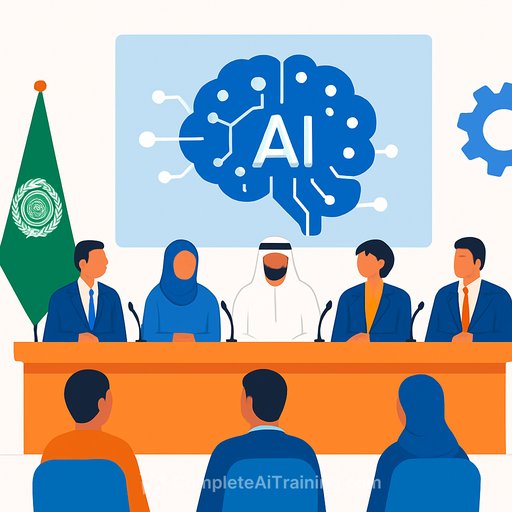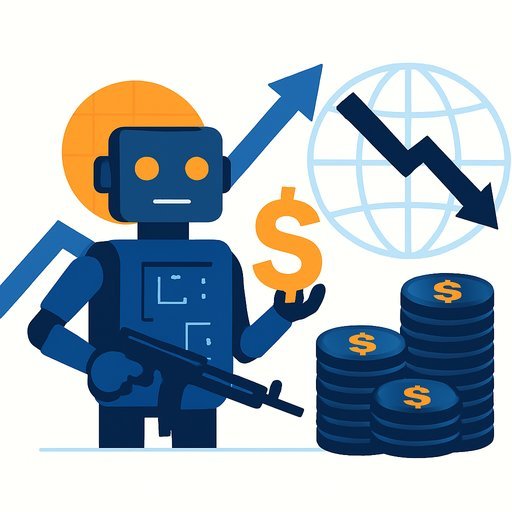AI, Governance, and the Arab League: What Executives Should Act On Now
The Annual Forum of Think Tanks in Arab States convened at the Arab League headquarters in Cairo to address a simple question with big consequences: how should institutions use AI to make better public decisions?
Over two days, experts, policymakers, and directors of strategic studies centers examined AI's role in analysis, big data, strategic forecasting, and the evolving mandate of research centers. They also confronted the real concerns: privacy, misinformation, and digital security.
Why this matters for strategy
- Decision cycles are compressing. Leadership needs near-real-time insight, not quarterly reports.
- Quality beats quantity. Better data pipelines and model governance outperform bigger dashboards.
- Risk is moving center stage. Privacy, misinformation, and cyber exposure now sit alongside cost and speed.
- Research centers are shifting from long-form reports to living systems: models, monitors, and decision support.
High-impact use cases discussed
- Crisis management: Early warning, event detection, and resource routing using streaming data and geospatial signals.
- Public opinion measurement: Sentiment and narrative tracking across media with short feedback loops to policy teams.
- Policy planning: Scenario testing, simulation, and impact analysis before committing budgets or announcing reforms.
- Disinformation response: Narrative mapping, provenance checks, and escalation playbooks for high-risk claims.
- Strategic forecasting: Ensembles that blend historical patterns with expert input, not black-box outputs in isolation.
Operating model for AI-informed decisions
- 1) Data foundation: Identify priority datasets, clarify ownership, set retention rules, and document lineage. No clean data, no trustworthy output.
- 2) Model strategy: Use a portfolio approach: off-the-shelf models for speed, specialized models for sensitive work. Keep a "replace or refine" review every quarter.
- 3) Governance and ethics: Adopt clear risk controls, approval gates, and monitoring. Reference the NIST AI Risk Management Framework and the OECD AI Principles.
- 4) Human-in-the-loop decisions: Pair analysts with model outputs in "decision cells." Require rationale notes, not just scores.
- 5) Measurement: Track accuracy, timeliness, explainability, and downstream outcomes. Kill what doesn't prove value.
- 6) Security by default: Secure data inputs, model endpoints, and prompts. Log everything. Prepare for red-teaming.
Guardrails that reduce risk
- Privacy-first design: Minimization, anonymization, and clear consent flows for any citizen data.
- Bias checks: Test models across demographics. Publish known limits. Add counterfactual testing to tooling.
- Source integrity: Verify media with provenance tools. Watermark official content. Escalate high-impact narratives fast.
- Model oversight: Document training sources, fine-tuning steps, and drift monitors. Review sensitive use cases monthly.
90-day execution plan
- Days 0-30: Pick three use cases (one each: crisis, opinion, planning). Audit data, define metrics, set governance rules, name an accountable owner.
- Days 31-60: Build scrappy pilots with clear baselines. Stand up a decision cell per use case. Start weekly scorecards.
- Days 61-90: Prove lift or shut down. If proven, integrate into workflows, automate inputs, and expand coverage.
Metrics that keep you honest
- Decision lead time: Minutes from signal to action.
- Forecast quality: Brier score or calibration error for scenarios.
- Operational lift: Reduction in manual hours and rework.
- Risk posture: Incidents detected, false positive rate, and time to contain.
What this means for research centers
- From reports to products: Build live dashboards, scenario libraries, and alerting systems that leadership uses daily.
- T-shaped teams: Policy experts plus data engineers, model evaluators, and security leads.
- Clear interfaces: APIs for data in/out, documented prompts, versioned models.
- Partnerships: Universities for methods, agencies for data, vendors for tooling-each with defined controls.
Next steps and resources
If you need a structured path to upskill teams by role, review curated programs at Complete AI Training - Courses by Job. For fresh additions, see the latest AI courses.
For governance playbooks and risk controls, the NIST AI RMF and OECD AI Principles are a solid base for policy and procurement criteria.
Bottom line: AI can help institutions respond faster, plan better, and communicate with clarity-if you build on clean data, enforce guardrails, and measure outcomes with discipline. Start small, prove value, then scale what works.
Your membership also unlocks:






